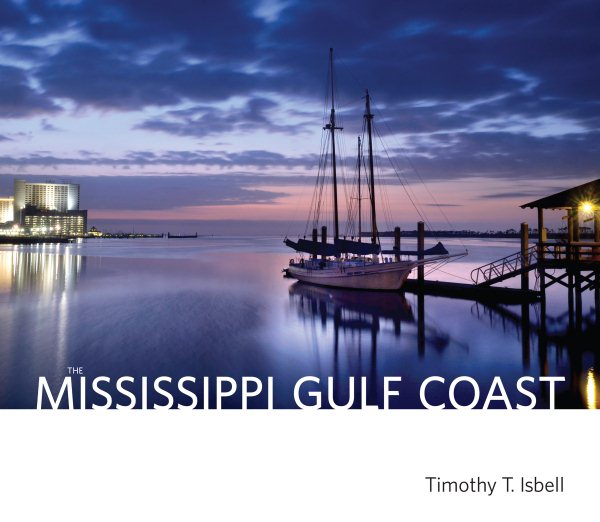By Scott Naugle. Special to the Clarion-Ledger Sunday print edition (September 16)
Writer and photographer Timothy Isbell accomplished a nearly impossible feat. In The Mississippi Gulf Coast, he showcases images of overwhelming beauty on the Mississippi Gulf Coast within the context and landscape of a region still recovering from Hurricane Katrina and the BP oil spill.
 In fact, Isbell’s monumental work is a response to Katrina and the resiliency of our coastal institutions and residents. As a Pulitzer-Prize winning photographer, he chronicled the destruction of the hurricane for The Sun Herald, the Gulfport/Biloxi-based daily newspaper. Isbell explains in his introduction to the The Mississippi Gulf Coast that the work has “special meaning, as it was a therapeutic endeavor after the destruction from Hurricane Katrina.”
In fact, Isbell’s monumental work is a response to Katrina and the resiliency of our coastal institutions and residents. As a Pulitzer-Prize winning photographer, he chronicled the destruction of the hurricane for The Sun Herald, the Gulfport/Biloxi-based daily newspaper. Isbell explains in his introduction to the The Mississippi Gulf Coast that the work has “special meaning, as it was a therapeutic endeavor after the destruction from Hurricane Katrina.”
With The Mississippi Gulf Coast, Isbell adds to an impressive body of photographic work. His Sentinels of Stone project produced three books memorializing the monuments and scenery of Gettysburg, Vicksburg, and Shiloh and Corinth. His work also includes a photographic study of the Vietnamese people on the Mississippi coast.
The book begins with an inclusive history of the Gulf Coast noting significant events and people. Starting with the Biloxi and Pascagoula Native American tribes, Isbell recalls Bienville and D’Iberville, British rule, the War of 1812, The Native Guard, and the establishment of statehood.
Colorful and influential personalities are remembered and noted for their contributions to the economic and cultural expansion of the coast. Edward Barq is recalled for opening the Biloxi Artesian Bottling Works in 1897. By 1900, Barq was producing what we now know as Barq’s Root Beer.
More recently, he notes the establishment of legalized gaming in 1990. Isbell comments, “Casino gaming is now one of the economic engines that provides a steady nest egg for the state treasury.”
Beginning from the western part of the coast and moving east, each town from Bay St. Louis through Pascagoula is celebrated with pages of breath-taking and mesmerizing color images. The full-page photographs, the artistry of the images and the obvious talent of the photographer are what make this both an exceptional and enduring memorial to the Mississippi Gulf Coast and its residents.
In the photographic section devoted to Pass Christian, Isbell captures a bald eagle launching into flight from a bare limb. The wings are just spreading, and the beak, a bold yellow, is beautifully contrasted against the light blue sky. In studying the photograph, one feels strong, proud, and invincible.
The built environment is also highlighted in stunning profile. Gulfport’s Fishbone Alley, newly created in 2016, is photographed during a quiet evening moment. Framed in artwork created by local artists, splashed and brush-stroked on the decades-old brick walls of the buildings framing the alley, the eye is drawn the length of the space into the far-off darkness. It is night, and light bulbs strung across the walkway form a streaking comet against the black sky. Benches beckon and suggest respite for conversation. The inlaid storm drain, straight and long, suggests a track into infinity. The moment as captured by Isbell, though devoid of people, is alive, breathing, indicating activity and vibrancy.
Referring to The Mississippi Gulf Coast, Isbell commented to me several weeks ago that he “put heart and soul into the book.” It shows, through the insightful, nuanced and intensely heartfelt work of this interpreter.
Scott Naugle is a resident of Pass Christian and the co-owner of Pass Christian Books/Cat Island Coffeehouse.
Timothy Isbell will be Lemuria on Saturday, November 24, at 11:00 a.m to sign copies of The Mississippi Gulf Coast.


Comments are closed.